Are you tired of spending hours cleaning your home? Looking for a powerful cleaning solution that can make your life easier? Look no further than vacuum cleaners and sweepers! These handy devices have revolutionized the way we clean, making it quick and effortless to maintain a sparkling clean home.
When it comes to choosing the right vacuum cleaner or sweeper, it’s essential to understand the top features that set them apart. By knowing what to look for, you can make an informed decision and invest in a cleaning device that meets your specific needs. Let’s explore the key features that you should consider:
Key Takeaways:
- Motor input power, water lift, and airflow are crucial specifications for comparing vacuum cleaners.
- Canister vacuum cleaners should ideally have an airflow of 100 CFM or more and a water lift of 90 inches or more.
- Upright vacuum cleaners can be categorized as “Direct Air” or “Dirty Air” design, affecting their cleaning performance.
- The working principle of vacuum cleaners involves suction, an air stream, and a vacuum-cleaner bag.
- Historically, vacuum cleaners were invented in 1901 by engineer Hubert Cecil Booth and have evolved over time.
Now that you understand the essential features of vacuum cleaners and sweepers, you can confidently browse through vacuum cleaner reviews and find the best vacuum cleaner brand for your cleaning needs. Whether you prefer a canister vacuum or an upright model, make sure to prioritize excellent airflow and water lift specifications for optimal cleaning performance.
Investing in a top-quality vacuum cleaner or sweeper will unlock the power of efficient and effortless cleaning, allowing you to spend more time doing the things you love.
Understanding the Working Principle of Vacuum Cleaners
When it comes to cleaning our homes, vacuum cleaners play a vital role in maintaining cleanliness and hygiene. But have you ever wondered how these remarkable machines actually work? In this section, I will delve into the inner workings of vacuum cleaners, shedding light on the science behind their powerful suction and efficient cleaning capabilities.
At the heart of a vacuum cleaner is a rotating fan that creates suction, which generates a flowing stream of air. This air stream is responsible for picking up dust and debris from various surfaces in your home. Similar to a stream of water, the air stream rubs against loose particles, dislodging them and carrying them through the inside of the vacuum cleaner.
The key to capturing these particles lies in the vacuum-cleaner bag, which acts as an effective air filter. Made of a porous woven material, the bag allows air particles to pass through while trapping dirt and debris. It’s crucial to position the vacuum-cleaner bag in the path of the air current to ensure optimal filtration.
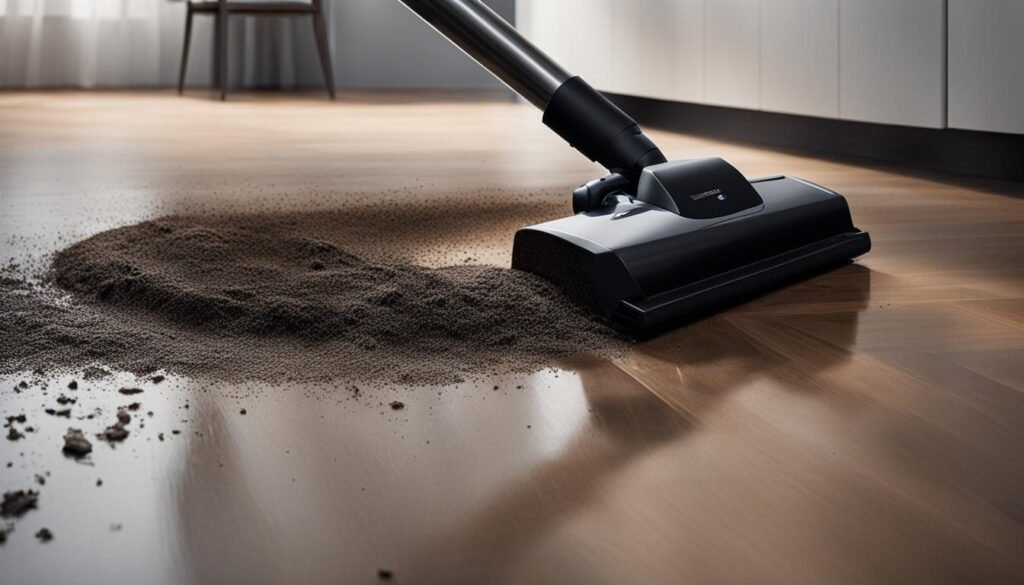
As the dirt-filled air passes through the bag, the collected dirt and debris remain inside, preventing them from escaping back into the room. This mechanism ensures that the vacuum cleaner effectively eliminates unwanted particles, leaving your floors and surfaces clean and dust-free.
Some vacuum cleaner designs feature rotating brushes at the intake port to further enhance their cleaning abilities. These brushes help loosen dust and dirt from carpets, making it easier for the air stream to pick them up. The combination of powerful suction, efficient filtration, and rotating brushes enables vacuum cleaners to tackle a wide range of cleaning tasks with ease.
Now that we have explored the working principle of vacuum cleaners, you have a better understanding of how these indispensable appliances keep our homes clean and fresh. In the next section, we will delve into the fascinating history and evolution of vacuum cleaners, uncovering the inventors and innovations that have shaped this essential household tool.
The History and Evolution of Vacuum Cleaners
Looking back on the journey of vacuum cleaners, it’s fascinating to see how this essential cleaning appliance has evolved over time. Let’s delve into the history behind the invention and development of vacuum cleaners.
In 1901, the vacuum cleaner was invented by none other than Hubert Cecil Booth, a skilled engineer. Booth’s inspiration came from witnessing a demonstration of a machine that used blowing air to raise dust from carpets. Intrigued by the idea, he set out to create a device that could perform the opposite – suck up dirt instead of blowing it around.
Booth faced numerous challenges during the development process, pushing the boundaries of technology at the time. He even subjected himself to near-fatal tests to ensure the efficacy and safety of his invention. Eventually, Booth founded the British Vacuum Cleaner Company and introduced his groundbreaking device to the world.
Initially, vacuum cleaners were large and expensive, making them accessible mainly to wealthier households. However, as advancements in technology took place, these cleaning machines became more compact, portable, and affordable for a wider range of consumers.
The Hoover Connection
One significant development in the history of vacuum cleaners is the association of the term “hoover” with this household appliance. The American company Hoover, which dominated the British market, played a pivotal role in popularizing the term. Hoover became synonymous with vacuum cleaners in the UK, still referred to as “hoovering” even today.
It’s intriguing how the name of a brand became so ingrained in our vocabulary, illustrating the significant impact that vacuum cleaner manufacturers have had on society.
Vacuum cleaners have revolutionized cleaning practices and provided efficient and reliable solutions for households across the globe. Let’s take a closer look at the evolution of vacuum cleaner designs, from their grand beginnings to the modern and innovative models we have today.
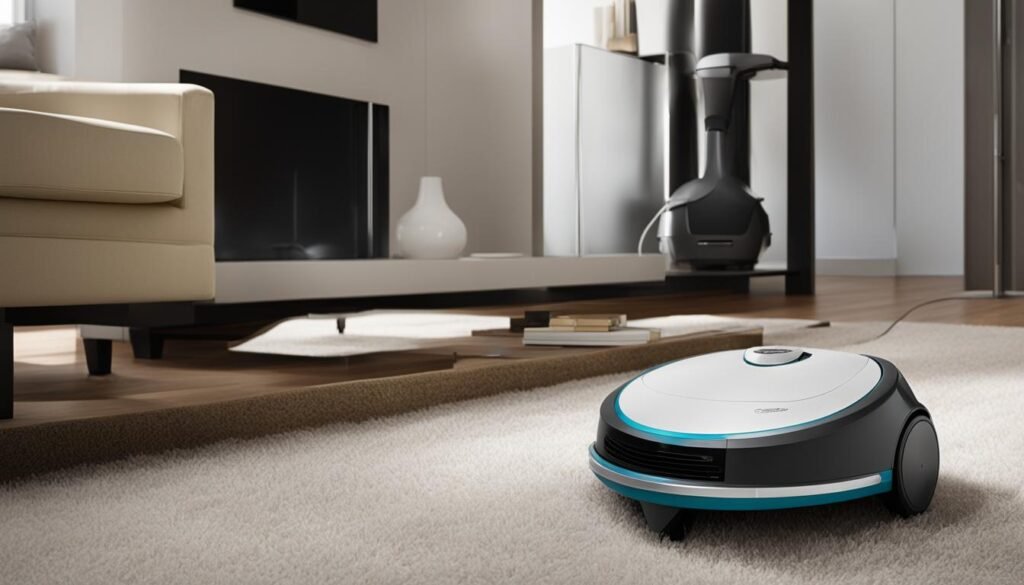
| Time Period | Description |
|---|---|
| Late 19th century | First attempts at mechanical carpet sweeping machines, often using manual labor or powered by hand cranks. |
| 1901 – 1930s | The era of the first electric vacuum cleaners, with manufacturers continuously improving designs and making them more efficient and user-friendly. |
| 1940s – 1960s | A period marked by innovations such as disposable vacuum-cleaner bags and improved filtration systems. |
| 1970s – 1990s | The advent of bagless vacuum cleaners and the emergence of various specialized models, such as handheld and cordless vacuums. |
| 2000s – Present | The era of robotic vacuum cleaners and smart appliances, bringing automation and convenience to cleaning routines. |
The Future of Vacuum Cleaners
As technology advances, the future of vacuum cleaners is set to revolutionize the way we clean our homes. The introduction of smart appliances and gadgets, such as robotic vacuum cleaners, is changing the game. These innovative devices aim to provide homeowners with convenient and labor-saving solutions.
Robotic vacuum cleaners, equipped with intelligent sensors and mapping technology, effortlessly navigate and clean various floor surfaces, making cleaning tasks a breeze. With advancements in machine learning, these devices can adapt to different types of dirt and optimize cleaning patterns for efficient and thorough results. They can even be controlled remotely through smartphone apps, allowing users to schedule cleaning sessions from anywhere.
Furthermore, the future of vacuum cleaners is not limited to robotic devices. The emergence of self-cleaning technologies is another exciting development in this field. Imagine a vacuum cleaner that not only picks up dirt but also automatically empties its dustbin or cleans its filters, eliminating the need for manual maintenance. These labor-saving features will undoubtedly save homeowners valuable time and effort.
However, despite the convenience offered by these modern cleaning technologies, households still spend a considerable amount of time on chores. This may be attributed to higher standards of hygiene and the increasing number of tasks required to maintain a clean and tidy home. While the future of vacuum cleaners holds promise for further innovations and automation, only time will tell if they can truly provide the relaxation and convenience we envision.
FAQ
What are the primary specifications to consider when comparing vacuum cleaners?
The primary specifications to consider when comparing vacuum cleaners are motor input power (measured in watts), water lift (sealed suction), and airflow (measured in CFM). Motor input power allows for a direct comparison between machines, water lift indicates how well the vacuum cleaner performs as the bag fills and filters load, and airflow is crucial for cleaning ability.
What are the ideal airflow and water lift specifications for canister vacuum cleaners?
Canister vacuum cleaners should ideally have an airflow of 100 CFM or more and a water lift of 90 inches or more for optimal cleaning ability.
What are the different designs of upright vacuum cleaners?
Upright vacuum cleaners can be categorized as “Direct Air” or “Dirty Air” design, where dirt passes through the motor, or by-pass motor design, where unfiltered air does not go through the motor. By-pass uprights typically provide airflow ratings, and a high-performing upright should offer at least 60 CFM.
How does a vacuum cleaner create suction?
The suction in a vacuum cleaner is created by the rotating fan, which generates a flowing stream of air that moves through the intake port and out the exhaust port. This air stream rubs against loose dust and debris, carrying them through the inside of the vacuum cleaner.
How does the vacuum-cleaner bag act as a filter?
The vacuum-cleaner bag, made of porous woven material, acts as an air filter. It allows air particles to pass through while trapping dirt and debris. The bag must be placed in the path of the air current so that the dirt-filled air passes through it, while the collected dirt stays inside.
Who invented the vacuum cleaner?
The vacuum cleaner was invented by engineer Hubert Cecil Booth in 1901. After witnessing a machine that used blowing air to raise dust from carpets, Booth set out to create a vacuum cleaner that would suck up dirt instead. He eventually formed the British Vacuum Cleaner Company and launched his new device.
What role did vacuum cleaners play in revolutionizing cleaning practices?
Vacuum cleaners played a significant role in revolutionizing cleaning practices by providing reliable cleaning machines for households. Booth’s early vacuum cleaners were large and expensive, used primarily by wealthier households. However, over time, vacuum cleaners became smaller, more portable, and more affordable, making them accessible to a broader range of households.
What does the term “hoover” refer to in relation to vacuum cleaners?
The association of the term “hoover” with vacuum cleaners originated from the American company Hoover, which dominated the British market. The term “hoover” is often used colloquially to refer to vacuum cleaners in the United Kingdom.
What is the future of vacuum cleaners?
The future of vacuum cleaners involves advancements in smart appliances and gadgets, such as robotic vacuum cleaners and self-cleaning technologies. These innovations aim to provide homeowners with time and labor-saving solutions. While the future may bring further innovations and automation, only time will tell if vacuum cleaners will truly provide the promised relaxation and convenience.

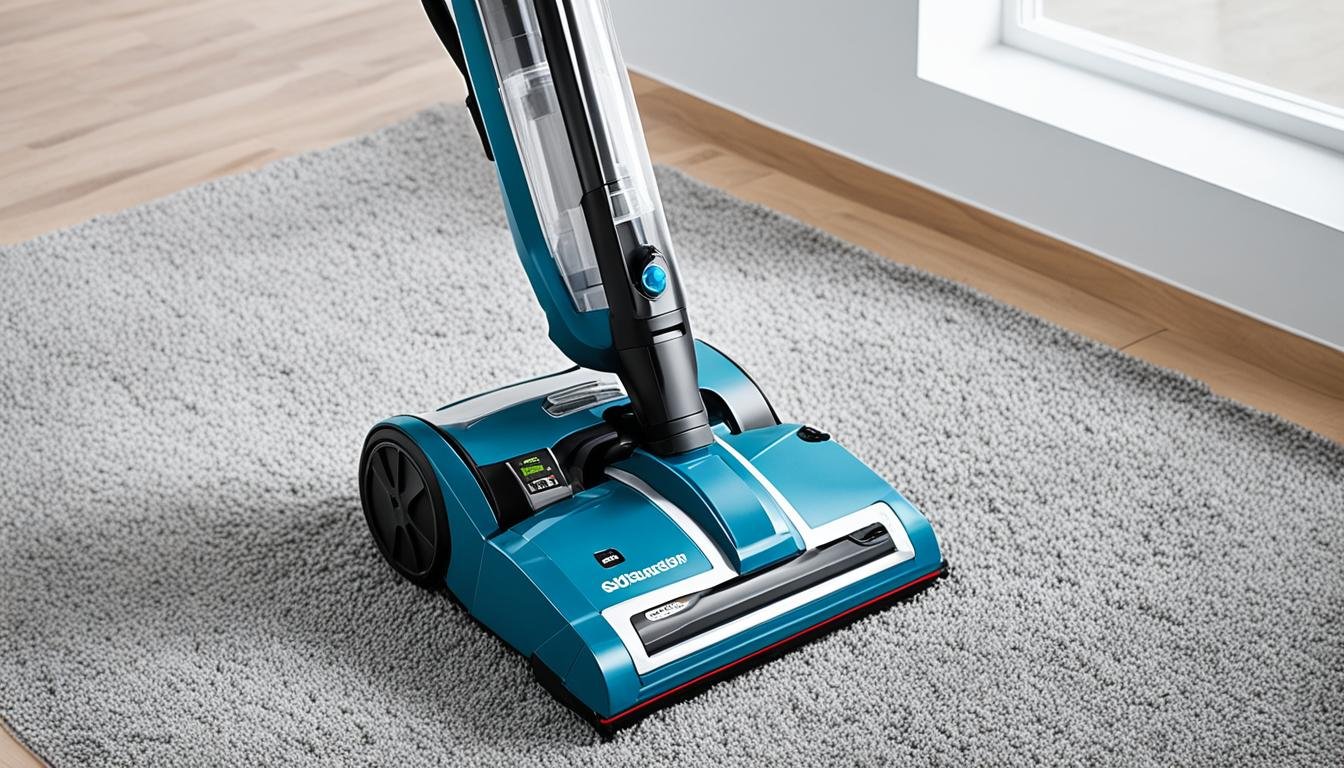
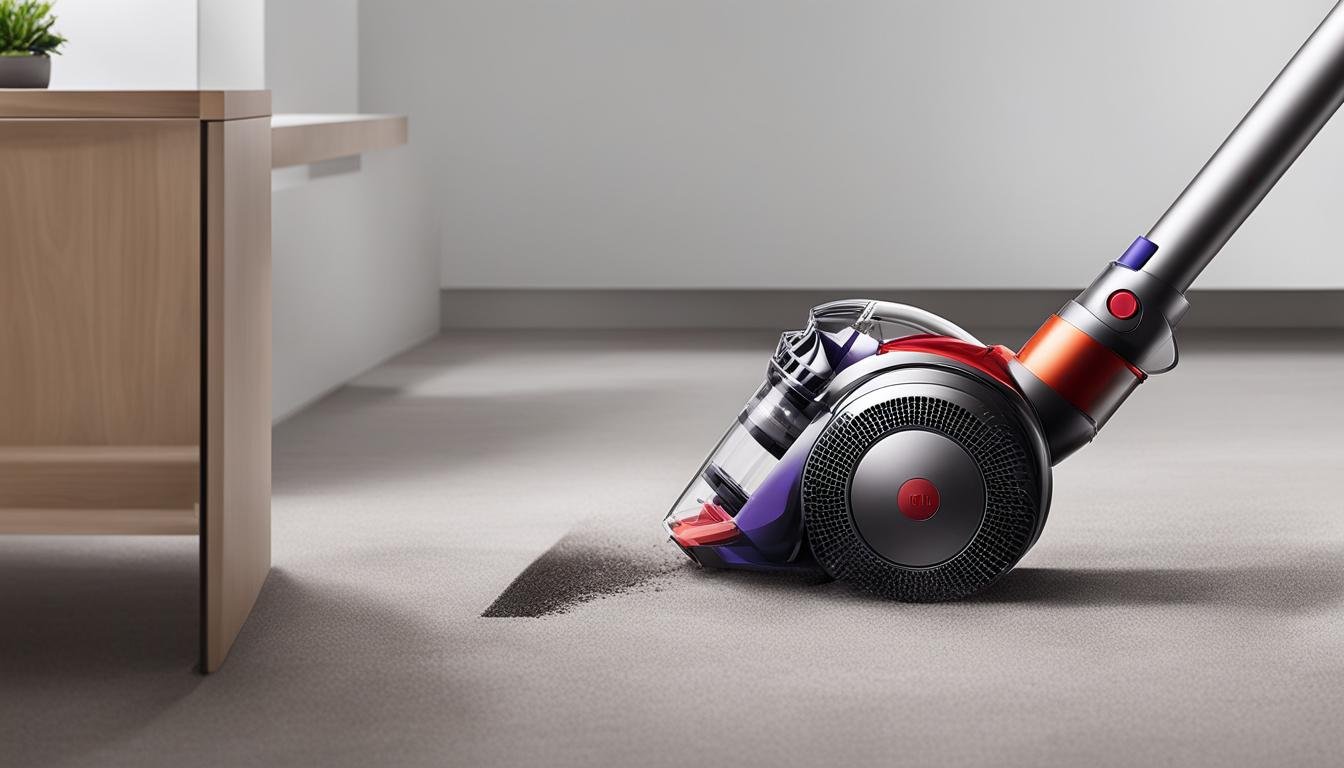
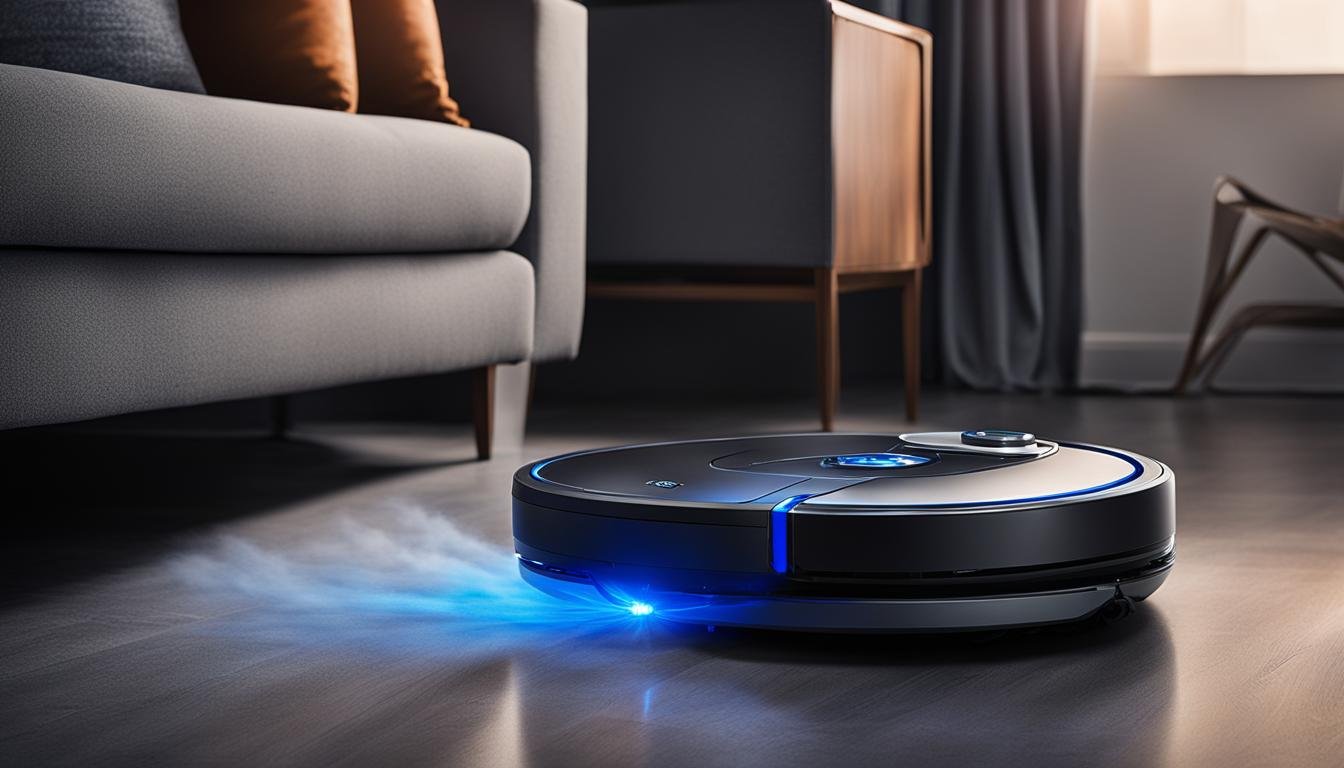
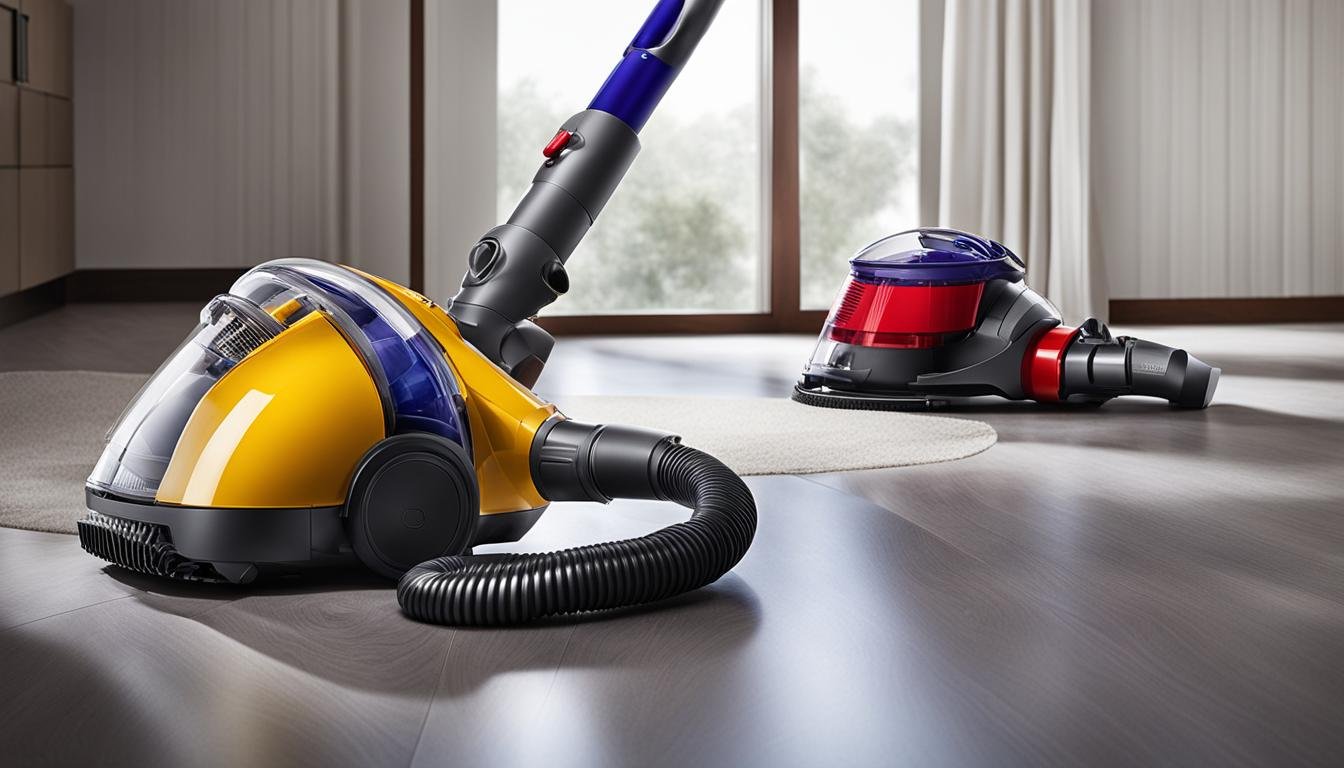
Leave a Reply